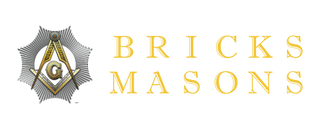







Hand-Painted Apron - A Sheaf of Corn Suspended Near a Waterfall 24"x18" Poster
A Sheaf of Wheat (or Ear of Corn) Suspended Near a Waterfall (or a Waterford) 24"x18" Hand Painted Poster
This scene is very present in fellow craft freemasonry. Here is it's symbolism and meaning:
In King's Solomon's time, the Masonic Sheaf of Corn represented the wages that master Masons gained from their labors.
Today, the Masonic Sheaf of Corn serves as a symbol of that past time, especially during the laying of cornerstones and the consecration, constitution and dedication of a new lodge. The Masonic Sheaf of Corn represents our rewards of the fruits of our labors, the sacrifices we've made and our rewards for these sacrifices.
The 'Plenty' of the Harvest
Oil, wine and corn have always been related with 'the Plenty' and 'the Harvest' before King Solomon's time and during King Solomon's time.
Masonic Wages
King Solomon promised King Tyre of Lebanon payments of oil, barley, wine and wheat in exchange for cedar, fir and algum which will be used to build the Temple.
Masonic Charity
The Masonic Sheaf of Corn is a symbol of charity to those that are less-privileged. Here are some Biblical verses that highlight these:
Deuteronomy 24:19 “When thou cuttest down thine harvest in thy field, and hast forgot a sheaf in the field, thou shalt not go again to fetch it: it shall be for the stranger, for the fatherless, and for the widow: that the LORD thy God may bless thee in all the work of thine hands.”
Deuteronomy 24:20 “When thou beatest thine olive tree, thou shalt not go over the boughs again: it shall be for the stranger, for the fatherless, and for the widow.”
Deuteronomy 24:21 “When thou gatherest the grapes of thy vineyard, thou shalt not glean it afterward: it shall be for the stranger, for the fatherless, and for the widow.”
The Sheaf of Corn in Modern Times
Today, the Sheaf of Corn represents the payment that the ancient Masons received. Today, we receive payment in dollars. In those days, they receive payments in the form of wine, oil and corn.
Today, a lot of Masonic scholars believe that the Sheaf of Corn represents grain generally. So, some use the term, ‘Masonic Sheaf of Grain’ or ‘Masonic Sheaf of Barley’ instead of ‘Masonic Sheaf of Wheat.’
In the United States, we refer to corn as large cobs that are shades of variegated white/yellow or white or yellow.
During the Halloween celebrations, Indian maize is used for decorative displays of the Fall harvest. This Indian maize is generally used for celebrations and not for human consumption over here. It could be a single color, or it could be variegated colors of white, orange, red, light yellow, purple and dark yellow.
We can’t say for sure if the corn we consume in the United States is the same grain that was grown for food in Biblical times. But Malcolm C. Duncan wrote Duncan's Masonic Ritual and Monitor in which the word ‘corn’ was used.
In the King James version of the Bible, the word ‘corn’ was mentioned more than a hundred times. No one can say if it is used to represent a particular grain or all the grains of the Biblical times. It’s possible that the name of the exact grain was lost during translation.
Shibboleth as related to corn
The word ‘Shibboleth’ is used to differentiate friends from enemies. It is a test phrase that was used by soldiers of Jephthah to identify the Ephraimites after there was a battle on the banks of the River Jordan.
‘Shibboleth’ was used as a test phrase because the Ephraimites had a different dialect from the troops of Jephthah. People were made to pronounce the word, and those that pronounced it the wrong way were identified.
There are two meanings of Shibboleth:
- It could mean a place to cross water or a waterford
- It could also mean corn or grain in general.
There are some Grand Lodges that use the word waterfall instead of waterford.
The Fruits of the Earth:
The Sheaf of Corn represents the fruits of the Earth and the hardworking and knowledgeable ones that are allowed to enjoy them.
Once you move from the Fellow Craft degree to the Master Mason degree, you can enjoy these plentiful fruits when you do the following:
- Learn how to pronounce Shibboleth correctly
- Cross the passages of River Jordan
- Pause within the Middle Chamber
Hiram prayed to God for guidance before drawing designs that the craftsmen will work on. We must also pray the same way. We are architects as Master Masons.
Masonic Wages and Masonic Charity
Anytime you pass under the Masonic Sheaf of Corn, you must remember how hard your ancient Brothers worked to receive the ‘plenty of their wages.’ The leftovers of the field were left for widows and poor people. We must also partake in Masonic Charity and provide for the widows, the fatherless, the less-privileged ones and strangers.
Let the Masonic Sheaf of Corn inspire you to share what you have learned with fellow brothers so that they can reap the harvest of your knowledge.
